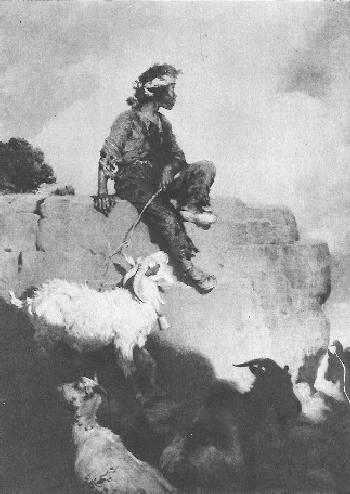
Figure 1.--This reproduction of a painting by William R. Leigh appeared in a 1921 book. It depicts a Navaho shepard boy in New Mexico. The painting is entitled, "The land of his fathers". |

|
This area comprised chiefly the states of Arizona, New Mexico and adjacent areas of Texas, California and northwestern Mexico. It is a warm, arid area, but adapted for some kinds of agriculture by many of the tribes. The historic (more recent) tribes comprise the true Pueblos, such as the Hopi, Zuņi, Taos, and Navaho, Apache, Walapai, Mohave, Yuma, and Pima as well as other tribes in northern Mexico. The largest tribe in the United States was the Navajo. The most war-like and difficult to control was the Apache. The south-western peoples comprise two distinct cultural groups, destinguished by the type of villages in which they lived--pueblo and non-pueblo, as well as other cultural characteristics. The pueblo peoples beside the destintive villages shared te use of the kiva (ceremonial house), kachina dances, altars, and sacred corn meal. tilling of the field and weaving of cloth by men rather than women, a clan system and ceremonies, and domestication of the turkey. The Hopi are one of the best known pueblo peoples and practice a distinctive dance, the snake dress, not practiced by other pueblo people. The non-pueblo tribes are much less uniform in culture. The main non-pueblo tribes, the Navaho, Apache, and Pima, were more nomadic than the pueblos, but all cultivated fields to varying degrees--the Apache the least and the Pima the most. The Apache began caring for sheep. Great variations were reported in baskert weaving and pottery. The social and political organization of the non-pueblos was much simplier and less sophisticated than the pueblos, more like the plains tribes. The Yuman were an important Southwestern language group. There were many small tribes, including the Paiute.
This American Southwest comprises chiefly the states of Arizona, New Mexico and adjacent areas of California, Nevada, Utah, Colotado, Oklamoma, and Texas, Conditions are similar in northwestern Mexico and many tribal territiries span the biorder. .
The Southwest is a warm, arid area, but adapted for some kinds of agriculture by many of the tribes. Here the Pueblo people were esoecially important in developing innovative agricultural techniques.
The south-western peoples comprise two distinct cultural groups, destinguished by the type of villages in which they lived--pueblo and non-pueblo, as well as other cultural characteristics. The historic (more recent) tribes of the southwestern cultural area comprise the true Pueblos, such as the Hopi, Zuņi, Taos, and Navaho, Apache, Walapai, Mohave, Yuma, and Pima as well as other tribes in northern Mexico. The largest tribe in the United States was the Navajo. The most war-like and difficult to control was the Apache. The pueblo peoples beside the destintive villages shared te use of the kiva (ceremonial house), kachina dances, altars, and sacred corn meal. tilling of the field and weaving of cloth by men rather than women, a clan system and ceremonies, and domestication of the turkey. The Hopi are one of the best known pueblo peoples and practice a distinctive dance, the snake dress, not practiced by other pueblo people. The non-pueblo tribes are much less uniform in culture. The main non-pueblo tribes, the Navaho, Apache, and Pima, were more nomadic than the pueblos, but all cultivated fields to varying degrees--the Apache the least and the Pima the most. The Apache began caring for sheep. Great variations were reported in baskert weaving and pottery. The social and political organization of the non-pueblos was much simplier and less sophisticated than the pueblos, more like the plains tribes. The Yuman were an important Southwestern language group. Several tribes composed the Yuman group including the Hualapai and Yuma tribes. The largest reibe was the Navajo centered in the Four Corners region and relatively recent arrivals. There were many small Southwestern tribes, including the Paiute and Qahatika.
Navigate the Boys' Historical Clothing Web Site:
[Introduction]
[Activities]
[Biographies]
[Chronology]
[Clothing styles]
[Countries]
[Bibliographies]
[Contributions]
[FAQs]
[Glossaries]
[Images]
[Links]
[Registration]
[Tools]
[Boys' Clothing Home]
Navigate the Boys' Historical Clothing ethnic pages:
[Return to the Main ethnic page]
[German]
[Greek]
[Irish]
[Scottish]
Navigate the Boys' Historical Clothing Native American pages:
[Return to the Main Native American cultural area page]
[Return to the Main Native American ethnic page]
[Return to the Main Native American page]
[Ethnic]
[Dance]
